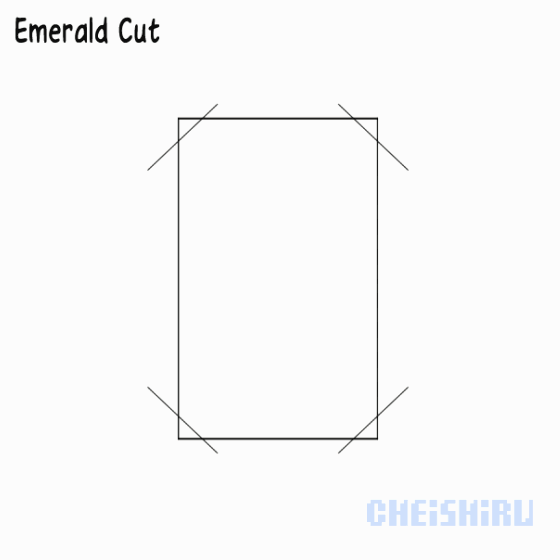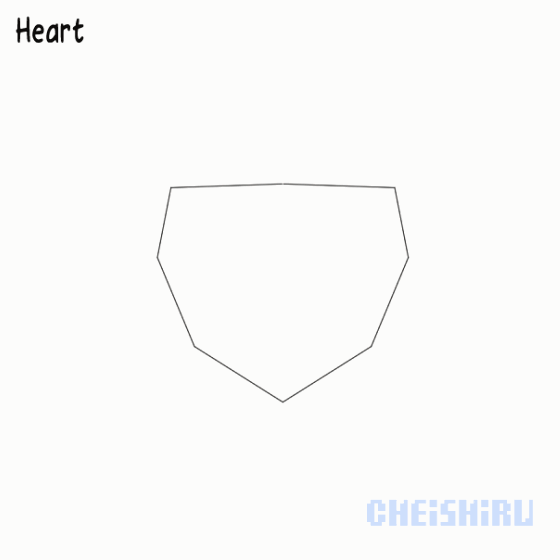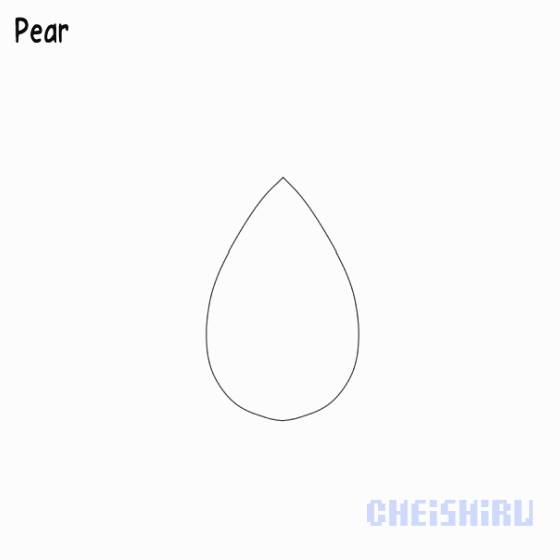how to draw a 3d gem
How to Draw and Paint Gemstones and Jewelry
viii,816 views
Precious gems or gemstones, with their unique amuse and sparkle, are widely used in all kinds of jewelry. There are many kinds of unlike shapes, simply gems are commonly cut into symmetrical facets, which is why such information technology's called "faceted gemstones".
This tutorial will embrace how to depict four common shapes of precious gems, how to color it and how to fit the gems into jewelry.
Video Tutorial
Gemstone Basics
*Parts of a faceted jewel (Bright cut).
A faceted jewel usually constituted of three major parts, no thing what the shape is: Crown (top/crimson), Girdle (centre/yellow) and Pavilion (bottom/blue). Aside from the largest part of the crown (called "table") the facets usually consisted of triangles and rhombus.
The shapes and the cutting technique to attain those shapes are pretty much standardized, yous tin can notice a lot of pictures on the Internet past searching "various diamond shapes" for reference.
Drawing a realistic looking gem might seem similar a daunting task, but if you have grasped the nuts, you'll find that it'due south fun to draw!
Round Diamond
Bright Cut (Circular diamond) is perhaps the diamond shape virtually people are familiar with, and then this is what we're going to encompass. Let's take a look at the blueprint.
*Bright cut diamond parts: Crown (right), Pavilion (centre) and Side view (left).
one. Table.
Create a new vector layer. Use Symmetrical Ruler and gear up information technology to 8, since the table of the Brilliant Cut has 8 sides. Draw an octagon with it. Since the octagon is how the tabular array looks from the top, Gratis Transform it until you detect the angle you lot like.
2. Finishing Crown'south basic shape + Girdle base.
Copy and calibration the angled octagon, then drag information technology down. This shape is symmetrical, so make sure the table is in the middle. Use Line Tool to connect the corners of the octagons with lines. The only lines you need are the ones that don't get through the table, erase the rest.
Copy outer outline, move it downwardly a bit. The base for Girdle is done!
iii. Pavilion Outline.
Describe an X with Line tool past connecting the corners of two opposite sides of the tabular array. This is to determine the middle of the table. Make a long directly line that goes through the table. The Pavilion's pointed stop should be adjacent to table'due south middle point. Describe information technology in approximation is fine!
Then depict the pavilion'southward outline.
Erase the ruddy lines.
5. Details.
Following the blueprint, draw the rest of the facets. I used the X to help me drawing details of the crown.
So the pavilion.
Lastly, stylize the girdle. For diamond of this type, the girdle isn't made with ii adjacent lines, just slightly raised in the centre.
Erase the girdle's base lines.
With this the diamond's outline is done! You lot can see gif beneath for the summarized steps.

Emerald Cut
*Emerald cut'south blueprint.
Although the shape is very dissimilar from diamond, the steps ane and 2 from cartoon round diamond still apply.
In that location are ii things to keep in mind when cartoon emerald shaped jewel:
1. Emerald'southward crown and pavilion is slightly rounded instead of directly.
You can see how to requite it a rounded look in the gif at the end of emerald's tutorial.
2. The pavilion ended with two points, forming a line—equally opposed to diamond's 1-pointed end. That's why determining its pavilion's end requires a slightly different method.
Later on determining the pavilion's base line, it'south time to draw the pavilion by referencing the blueprint.
It's too complicated to explain the how to with still images, please refer to the gif below!

Heart Shape
*Heart shape pattern
1. Different from two tutorials above, draw not only the table, but also the outline of the crown. In this case, the heart shape.
ii. Angling the crown.
Subsequently using Free Transform to angle the crown, make sure to raise the tabular array a scrap because it'due south supposed to be raised. Otherwise it'd look flat.
3. Drawing the Crown's facets.
Draw the height role beginning.
For the crown, the meeting points (in red) roughly formed a heart shape. If you're using vector layer, indistinguishable the outer line of the precious stone and resize it for a quick reference when cartoon the facets.
You tin as well draw help lines to make drawing the facets easier.
Copy the outlines and drag information technology below the crown and delete the overlapping lines for the girdle.
iv. Pavilion.
Using the Ten lines can aid determining the mid point. The Pavilion is a bit crooked nearly the curvation.
Go on this in mind when drawing a heart shaped jewel.
Subsequently drawing the pavilion's facets, the heart shaped precious stone is done!

Pear Shape
*Pear shape blueprint.
Looks like tears more than pear, correct? Pear shaped jewels steps is similar to heart shaped because of their unique shape.
1. The table.
Just like eye shape, draw the crown's outline along with the table.
2. Angling the crown.
Raised the table a bit and so that it won't look flat.
iii. Finishing the crown.
Like to Heart shape, the coming together points of the facets (in ruddy) formed a pear shape.
Stop cartoon the crown with the help lines. So copy the outer part of the crown, motility information technology down and erase the overlapping lines of the copied layer for the girdle.
4. Pavilion.
The tip of the pavilion is low. Utilise the X to assistance you lot determine the position.
Pear shaped jewel is done!

Painting Diamond
For coloring gemstones, choose colors with high contrast. The less contrast it has, the duller the gems would look. Subdued colors don't make gems look as sparkling every bit it should be.
For you who aren't good at at picking colors (similar me), using separate layers for each colors and correction layers tin can help tremendously. Separate layers for each color ways I tin change the color whenever I want without affection other shades. Correction layers prepare coloring issues changing the colors can't fix.
Brushes I used for coloring are available by default in Prune Studio Paint: Soft airbrush, Transparent watercolor, Mapping Pen and Sparkle A castor.
i. Base colour.
Create a new layer for the base colour. Since diamond is colorless, I chose white. I picked random colors at the beginning, so if y'all'll see the colors changed as I paint.
2. Overall Shadow.
Decide where the light comes from. Create another layer and clip it to base color layer. With Soft Airbrush, colour the overall shadow.
3. Shade ane.
Create a new layer above the Overall Shadow layer and clip it. The Blending Mode is Multiply.
Describe the first shade using Transparent watercolor castor. Describe information technology with broad strokes, the details can look. Pigment the surfaces the Overall Shadow didn't impact, too!
Continue in mind that both light and shadow on diamond would be polygonal (normally either triangular or rectangular), so make sure it looks quite blocky.
iv. Shade 2.
Create a new layer higher up Shade one, too clipped and Blending Fashion Multiply.
Pigment with a color darker than Shade 1 with Transparent watercolor brush. This time focus more on detailing. The side that don't become light has mode more particular.
5. Black.
Some other new layer, place it above Shade 2, clip it and Blending Mode Multiply.
Still with Transparent watercolor brush, paint blackness mainly on places where Shade 2 is, but don't overdo information technology. You don't want the diamond looks way also dark.
I changed the colors so that it looks closer to the prototype I wanted.
6. Light.
New layer above Black layer, also clip it. Using Mapping pen, describe the smooth in white. While making the diamond wait sparkling, I besides focused on making the edges more prominent.
7. Terminal Adjustments.
Painted more Shade i and Shade 2, also erased and added some white on Light layer.
The Correction Layers: Hue/Saturation/Luminosity for colors up to Shade 2 (#1), Effulgence/Contrast for colors up to Shade ii (#2), Brightness/Contrast overall colors (#3). Then add together sparkles with Sparkle A brush (#4).
The diamond is done!
Real diamonds accept way more complicated shades and lights, simply copying the real matter will brand your fine art looks way too complicated and confusing to come across.
Simplifying and drawing the best parts are the things that make fine art looks appealing.
Don't exist afraid using broad strokes or worrying over how the edges of the colors you lot painted don't await solid or blocky enough! Adjusting Brightness/Contrast and adding white lines to the edges of the colors can aid.
The expanse marked in red looks more blocky and shiny with the improver of white lines. Hitting two birds with one stone!
Gemstone in Jewelry
In that location are some ways for jewelry to concur gems. Nosotros're going to cover the well-nigh common one. Prong setting and bezel setting.
Prong setting uses metallic tines (prongs) to hold a gemstone in place, usually it has three or more prongs.
*Prong setting
Bezel setting uses metallic band to wrap around the rock.
*Bezel setting
There's a bezel setting variation where the bezel covers two sides instead of the entire precious stone. This is called "one-half bezel" setting.
Drawing Jewelry
Band, earring and pendant are jewelry nosotros can find anywhere, and so we're going to draw:
1. Round diamond with half bezel setting for the earring.
2. Connected to the earring by the teardrop shaped chain, a pear shaped gem with bezel setting.
iii. A choker with heart shaped jewel with prong setting.
4. Band with an emerald gem, also with prong setting.
*Our mannequin, for context. It'due south easier to imagine the jewelry when there'due south a subject.
The pictures beneath take sketch pics on the left and finished consequence on the right
Drawing the round earring.
The teardrop shaped concatenation with pear shaped jewel. I drew the chain by hand. Don't get me wrong, chain brushes are great, but when the concatenation is a part of the main menu, monotonic chain makes your art look flat.
The centre shaped pendant.
Lastly, band with emerald shaped jewel.
Cartoon the jewelry: success!
Coloring Jewelry
Since coloring a gem has been covered on previous department, we'll skip the gems' step-by-stride and focus on coloring the metals.
Simply like gems, using colors in high contrast volition make the metals look shiny and non boring.
1. I colored the gems beginning, then created a new layer for the base color.
For painting metals, fifty-fifty if the fabric is platinum, avert using pure white as the base color since you'll demand white to make the metal smooth.
2. Create a new layer above the base color, clip information technology. Every bit opposed to drawing the shade first like I did the gems, I adopt to draw the light first for metals.
3. Create a new layer betwixt base color and the low-cal layers, draw the first shade.
4. Some other new layer, this fourth dimension betwixt the showtime shade and calorie-free. The blending mode is multiply and the color is the aforementioned i used for the first shade. Paint some well-nigh the shine to emphasize how shiny the metallic looks.
5. I drew the outlines too thick, then I thinned it by using the colors next to the outline. I painted some parts of the outline with white so both the gems and metals tin sparkle more.
6. Lastly, using correction layer Brightness/Contrast for lightening the metals colors.
Drawing jewelry, done!
Promise you detect the tutorial helpful! Accept fun drawing!
Users who liked this post
Source: https://tips.clip-studio.com/en-us/articles/5250
0 Response to "how to draw a 3d gem"
Enregistrer un commentaire